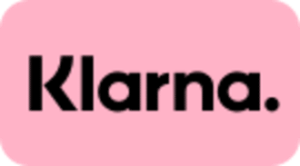Klarna Overview
Klarna is a Swedish payment provider or also called Payment Service Provider (PSP). Klarna’s competitive advantage stems from its very customer- and merchant-friendly payment methods. Since the takeover of Immediate Transfer, customers can not only order on account and pay in instalments, but also initiate an immediate bank transfer. In this article you will learn everything about using and offering Klarna.
Klarna – what do you really need to know?

It all started in 2005 when founders Sebastian Siemiatkowski, Niklas Adalberth and Victor Jacobsson took one of the disappointing last places in the Entrepreneurship Award at the Stockholm School of Economics. But there were companies and investors who believed in the up-and-coming payment service provider.
The venture capital company Investment AB Öresund gave the company a substantial financial injection. Further investments and company shareholdings followed. Today, Klarna is one of the largest online payment providers.
At the same time, the business model is simply told for both the merchant and the customer: While buyers can pay for their services and products by invoice, instant transfer or hire purchase, Klarna assumes the fraud and default risk for the merchant.
In addition, the company offers interested online shops the so-called Klarna Checkout. This offers the advantage that once registered, customers only have to enter their email address and postcode to complete a purchase. Due to the now good merchant coverage, this is a real advantage for consumers in Europe.
Online shops: 500,000 merchants and more than 150 million customers
Merchants who choose to implement (Third Party Billing) Klarna as their payment service provider are relying on a trusted provider with high acceptance among consumers. More than 500,000 merchants from all sectors have already opted for this service. These include well-known shops such as Flyeralarm, dm, Hollister, Airbnb, Lidl, Lufthansa, Flixbus, Deutsche Bahn, Roller, Superdry and many more.
In addition, the Swedish fashion retailer H&M entered into a cooperation with the provider in October 2018 and invested 18 million euros in the payment provider, which corresponds to a share of about one percent.
How does a Klarna invoice work?
When a customer buys products online, they have 14 days from the invoice date to pay for the order. After shipping, the customer receives the invoice from Klarna, depending on the merchant, by email, separately by post or together with the goods. In this way, the customer first checks the goods and then pays for the order.
What does Klarna cost?
In fact, the use is not free of charge for both the trader and the customer. The merchant usually passes on a so-called invoice fee to the customer. This can be around 1.00 to 1.50 euros per purchase. In the case of an instalment purchase, additional fees and interest accrue for the customer. The merchant also contributes to Klarna’s financing. The fees depend on the payment method. Talk to us to find out more!
For example, 3.25% + €1.69 per transaction is due for a purchase on account, only 1.35% + €0.20 per transaction for an instant transfer and 3.00% per transaction for payment by instalments.
Klarna and Subscription Economy
The popular payment service provider has recognised the signs of the times and also offers subscription solutions such as Recurring Payments for service providers and merchants. In doing so, the provider also enters into technical partnerships such as with WooCommerce, one of the most widely used shop systems. More and more retailers and service providers see in Subscription the opportunity to provide consumers with the latest and greatest models of their product, as Klarna.com’s website also notes.
Making the purchase process as easy as possible in the process is an important claim that results in contemporary technical solutions, such as the Klarna Checkout. This means that the company’s good technical prerequisites and connections make it particularly well-suited for start-ups and smaller merchants.
Klarna app, credit card & Co.: The future is smoooth
Purchasing with Klarna is smooth. At least that’s how the company advertises its app of the same name. This gives the customer an overview of all purchases and, thanks to the good merchant coverage, such an app actually makes sense. A clever move: for the merchant himself, the Klarna app is another reach channel to draw attention to his own products. In addition, the payment provider now also offers its own credit card (the Klarna Card) in cooperation with VISA.
The special feature: Here, too, the customer has the freedom to choose how to pay with the card – i.e. whether immediately, by extended payment period or in instalments. Just like the online payment, the ‘Klarna Card’ is also protected by Klarna’s digital security system.
In summary, the provider enjoys a high level of consumer acceptance and should definitely be taken into account when making decisions regarding a retailer’s PSP portfolio.

